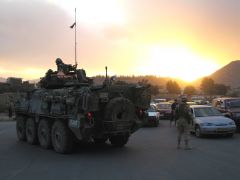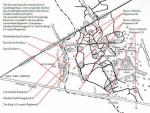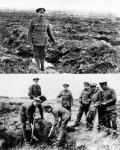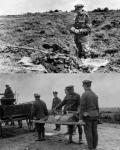-
Posts
11 -
Joined
-
Last visited
Profile Information
-
Gender
Male
-
Location
Denmark
-
Interests
Commonwealth medals to Danes.
General Service Medal with Palestine 1945-48 clasp, to Airborne units.
Recent Profile Visitors
1,516 profile views
Clausen's Achievements
-
-
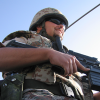
How rare are R.A.M.C. 1914 trios?
Clausen replied to RelicHunter's topic in Great Britain: Orders, Gallantry, Campaign Medals
I agree with Paddywhack. Post the the name on the medals, and it is possible that some on this forum can help you with his details. Bjoern -
Thanks for your comments! Much appreciated. I've just realised that the link posted in my research, is no longer valid. Here is a working link: http://ogcbs-new.test.technophobia.com/admin/files/Recovery%20and%20reburial%20in%201919.pdf Mervyn, you asked for further research to build up our knowledge - the above link might add a little. Bjoern
-
I have decided to share this medal and write-up with you. Hope you enjoy the story of the man behind the medal. India General Service Medal 1908 with N.W.F. 1908 clasp to 8356 Private William Player 1st Battalion Northumberland Fusiliers William Player was born December 15th 1882 at 36 Co-operation Street, Stafford, Staffordshire. His parents were Cordwainer Thomas Player (Born Bristol 1834) and Bookbinder Mary Player (Born Stafford 1838). William's father died in the second quater of 1886. William initially decided to follow the footsteps of his father, and was a ”Apprentice to the shoe trade” in 1901. Several others of his family was also employed in the ”shoe trade”. Becoming a soldier: Obviously William wanted to experience somthing else, as he enlisted at New Years day 1901, for 7 years in the British Army (Northumberland Fusiliers) and 5 years in the reserve. He joined at Stafford and was posted to N.F. Depot on January 1st 1902. William was examined at Lichfield the same day. His trade was shoemaker, 5 ft. 4 ½ inches tall, chest when fully expanded was 35 inches, weighing 120 lbs. He was posted to 3rd Battalion, Parkhurst Barracks, Newport, Isle of Wight on January 18th 1902. On August 1st 1902, he was appointed Unpaid Lance Corporal with 4th Battalion Northumberland Fusiliers (Richmond Barracks, Dublin). On September 1st 1902 he was appointed Paid Lance Corporal (Royal Barracks, Dublin) but he was reverted to Private at his own request on October 16th 1902. William was posted to 1st Battalion Northumberland Fusiliers (Royal Barracks, Dublin) on December 16th 1902. William went to serve in South Africa from December 16th 1902 (Main Barracks, Cape Town and Wynberg, Cape Colony). On March 25th 1903 at Wynberg, William caused a disturbance in the barrack room about 11.55 and resistin escort. He was sentenced 96 hours of hard labour. 1st Battalion sailed on April 7th to Mauritius in the transport Orissa which by all accounts is a very small ship, due to arrive at Port Louis on or about Thursday April 16th. They were In quarantime at sea until 22 April, during which time William was sentenced 12 hours in the cell, for not complying with an order. 1st Battalion's base (Phoenix Camp, Vacoas) was estaplished on June 1st 1903. At Curepipe Vacoas, on April 25th 1904 and September 5th 1905, he was on both occasions sentenced to 8 days C.B., for being drunk in town. William extended his service with colours to 8 years, and 4 years in the reserve on June 1st 1904 and was Granted service pay Class 1 Rate 6 on the same day. Transport Soudan left Port Louis on January 31st 1906 with 1st Battalion, bound for Bombay. They arrived at Fort William, Calcutta on February 17th, having transhipped to Dufferin at Bombay. In December 1907, the Battalion arrived at Peshawar, Punjab for new posting. In May 1908 the Battalion moved at short notice to action against the Mohmands, based at Matta Moghul Khal. william took part in the 1908 Mohmand Expedition, and qualified for the India General Service Medal with North West Frontier 1908 clasp. In June 1908 th Battalion was detained in Peshawar due to cholera outbreak. And in July 1908 the majority of the Battalion was posted to hill station at Cherat for the hot season. It returned in November 1908 for the cooler season. In Calcutta January 29th 1909, William was sentenced to do 96 hours detention + fined 3/6, for being drunk when parading for trooping the colours. In February 1909 the Battalion moved to West Ridge, Rawalpindi, to improve health in hot season. In April 1909 the Battalion moved to the quarters at Gharial - 7,000 feet up in Murree Hills. And it moved back to Rawalpindi on November 23rd 1909(11). He returned to England on January 20th 1910, and was transferred to Army Reserve two days later. In 1911, William lived at his birthplace with his mother, two sisters, one brother, one brother in law and a nephew. He was listed as general labourer. The Great War: William was mobilized August 5th 1914 and posted to 3rd Battalion Northumberland Fusiliers the next day. William went overseas and landed in France October 27th 1914, posted to 1st Battalion Northumberland Fusiliers. William was slightly wounded in the hand at Poperinghe March 11th 1915. He returned to duty twelwe days later. Battle of Bellewaarde June 16th 1915: Map from http://bellewaarde1915.co.uk/ The Battalion was formed for attack to the following order: From the right: Letter X Co. Under Capt. Bagshawe attached from Special Reserve of K.O.S.B. Letter W Co. Under Capt. H. R. Sandilands. Letter Y Co. Under Captain Roddam attached from Special Reserve 3rd Nth’ d Fusil. Letter Z Co. Under Lieutenant E. E. Dorman-Smith was in support on the left in RAILWAY WOOD. Our artillery started the bombardment at 2:50 Hrs. and with two pauses, continued till 4:15 Hrs. the time laid down for the attack to commence. The enemy soon replied at first with shrapnel, later with heavy shell. His fire was mostly directed at RAILWAY WOOD, and a certain proportion of gas shells were fired. Owing to the proximity of the enemy’s trenches and the necessity for low bursts to cut the barbed wire entanglements, our own artillery caused us a certain number of casualties before the attack commenced. At 4.15 a.m. the attack was launched, the front line of the trenches was quickly taken also the alternative trenches behind. In front of the trenches a certain amount of resistance was offered, in others the enemy surrendered almost at once. The battalion suffered rather heavily, many prisoners were taken. The battalion started for the 2nd line of the enemy’s trenches after a very short interval and letter Z, Co. which was in support came forward to the front line. Z, Co. suffered severely from the very heavy shell fire brought to bear on them by the German artillery, both light and heavy. Letter W – Y Co. bore to the left and started bombing down the enemy’s trenches. Here there was severe fighting. The tide of battle ebbed and flowed, finally the enemy received reinforcements of men and bombs and that combined with strongly placed machine guns, forced us to abandon the idea of a further advance in that particular direction for the time being. (viz to Y7 and Y8, vide map appendix). In the meanwhile portions of Z and X Cos. With some of the Liverpool and Scottish advanced and made good a line just W (west) of BELLEWARDE FARM. Here being exposed to sniping from both flanks and machine gun fire from the left flank they halted near old and shallow FRENCH trench and dug themselves in. This trench was only very lightly held owing to the paucity of men. Casualties though not heavy were frequent. Captain Sloper and a party bombed down a communication trench and rushed the enemy’s third line of trenches. They remained here about an hour. The adjoining troops returned and a good many casualties occurred. So both flanks being in the air a retirement was made to the new trench dug behind BELLEWARDE FARM. Only thin metal entrenching tools were available to dig this trench and the ground was hard and there had not been time to finish digging the trench properly. During this time the enemy heavily “Crumped” RA ILWAY WOOD and BELLEWARDE. There was a lull as regards direct fire on the advanced trenches for two or three hours, but casualties from fire from the left flank were frequent and RAILWAY WOOD and its vicinity were continually “Crumped”. In the meantime on the left positions Cos. W and Y had consolidated the positions a little N (north) of Y.ll. Early in the afternoon the enemy marched E (east) of BELLEWARDE FARM in their trenches and opened a heavy rifle and machine gun fire on our advanced position from close range. Attempts were made to block the assault up a CT (communication Trench) towards Y.ll. With bombs, but all our bombers were killed. Finally the troops on our right having retired some time previously and so leaving us outflanked on both sides, the front line was withdrawn under heavy fire of rifles, machine guns and artillery, light and heavy, to the first line of GERMAN trenches captured in the morning, where the battalion was relieved after dark by the Royal Scots of 8th Infantry Brigade. A number of gas shells were fired during this retirement. All four of the battalion’ s machine guns were knocked out quite early in the day. Valuable assistance was rendered on the left flank by the machine guns of the 2nd Btn of the 14th P.O.W. West Yorkshire Regiment (2nd Battalion, 14th Prince Of Wales). Valuable assistance under most difficult conditions was rendered by the artillery forward observing officers. Prisoner of War: During all the action that day, 8356 Private William Player X Coy, 1st Bn. Northumberland Fusiliers was captured by the enemy. He was reported missing two days later. On August 8th 1915, William was confirmed as a Prisoner of War, interned at Sennelager III in Germany. After 3 years and 179 days in captivity, William was repatriated back to England on December 12th 1918. William was posted to 4th Reserve Battalion Northumberland Fusiliers on February 15th and demobilized March 26th 1919. He had served 17 years and 85 days. Going back to France to exhume the dead: I reckon that William had difficulties in adjusting to civilian life, as he re-enlisted with the Labour Corps numbered 700035, on May 29th 1919. Joined 3rd Labour Company on June 26th 1919, which was doing the unpleasant task of exhumation and reburial duties on the battlefields in France. Exhumation in France: Exhumation companies comprised squads of 32 men. Each squad was supplied with "two pairs of rubber gloves, two shovels, stakes to mark the location of graves found, canvas and rope to tie up remains, stretchers, cresol (a poisonous colourless isomeric phenol) and wire cutters." A stake was placed where remains were found. Experience was the only method of knowing where to dig. Indeed, the IWGC noted "Unless previously experienced men are employed...80% of the bodies which remain to be picked up would never be found." Indications of remains included: i. Rifles or stakes protruding from the ground, bearing helmets or equipment; ii. ii. Partial remains or equipment on the surface or protruding from the ground; iii. iii. Rat holes - often small bones or pieces of equipment would be brought to the surface by the rats; iv. iv. Discolouration of grass, earth or water - grass was often a vivid bluish-green with broader blades where bodies were buried, while earth and water turned a greenish black or grey colour. The remains were placed on cresol soaked canvas. For identification purposes, a careful examination of pockets, the neck, wrists and braces for identification tags was required. The body was taken to the cemetery and interred under the auspices of the Registration Officer. Photos from http://www.cwgc.org/admin/files/Recovery%20and%20reburial%20in%201919.pdf It is notable that the described effects of wartime clearance were emotional in nature, namely depressed mood (and other post-traumatic symptomatology), which was both marked and common, if transitory. The post-war exhumers were more prone to behavioural disturbance: drinking, insubordination, and rowdiness. It would be predicted that the psychological impact of exhumation would be greater on the latter than on wartime clearers because there was no real break to the task, and the distraction of other duties was absent. It is of course possible that the men who volunteered for this work were those who had no reason to return to civilian life swiftly. Some may have been 'psychological misfits' who would be prone to this 'acting out' behaviour. Clearance and burial were undoubtedly amongst the most unpleasant and unpopular tasks Private J. McCauley. He noted how: "For the first week or two I could scarcely endure the experiences we met with, but I gradually became hardened." He described his work: Often have I picked up the remains of a fine brave man on a shovel. Just a little heap of bones and maggots to be carried to the common burial place. Numerous bodies were found lying submerged in the water in shell holes and mine craters; bodies that seemed quite whole, but which became like huge masses of white, slimy chalk when we handled them. I shuddered as my hands, covered in soft flesh and slime, moved about in search of the disc, and I have had to pull bodies to pieces in order that they should not be buried unknown. It was very painful to have to bury the unknown. William was discharged from the Labour Corps on November 27th 1919, unfit for service, suffering from malaria and rheumatism. The malaria originated from Mauritius in 1904. William attested for one year in the Territorial Force, numbered 5041811 with 6th North Staffordshire Regiment, on July 15th 1921. On enlistment, he was 37 years old, 5 ft. 22 inch. tall, weighing 140 lbs., chest measured when fulle expanded 35 inch. His complexion was dark eyes and hair was grey. He attended the annual camp from July 31st to August 14th 1921. He was finally discharged ”His service being no longer required” on August 31st 1922. William never married or had any children. His next of kin was his sister Mary Draper, living at 12 Co-operation Street in Stafford. William Player died at the General Infirmary in Stafford, March 5th 1928, 45 years old. He died of (1A) persistent haematemesis (1B) gastric ulcer and (2) perforated gastric ulcer from which he was operated for on February 17th. His sister Mrs. Draper was with him at his death. William Player was also entitled to a 14-star trio without clasp. If anyone know where it is, please contact me. Bjoern Klausen Sources: (1) – Service Record William Player. (2) - Census 1881 (3) - Census 1901 (4) - Census 1911 (5) - Death records (6) - Medal Roll for N.F. - I.G.S. 08 – N.W.F. 1908 (7) - http://bellewaarde1915.co.uk/ (8) - Clearing the Dead py Peter E. Hodgkinson (9) - Recovery and Reburial in 1919 – CWGC (10) - Regimental War Diary 1st Battalion Northumberland Fusiliers (11) - St. Georges Gazette (12) - Death certificate (13) - http://www.staffordtown.co.uk/sgi.html
-
Ricardo, The service number certainly suggest a R.A.O.C. enlistment (7574001 - 7657000 and 10530001 - 10600000). If I read the servicenumber correct, I would say that this is the LSGC awarded to 7582865 Jack Leslie Gates R.A.O.C. From Cadet to 2nd Lieutenant on 14th July 1945: http://www.london-gazette.co.uk/issues/37236/supplements/4277 Relinguished his commission 7th January 1948: http://www.london-gazette.co.uk/issues/38361/supplements/4237 There was two Jack Leslie Gates that fit the bill. First: born 23rd March 1911 Southwick, Sussex - Died July 1994. Second: born third quarter of 1912, West Derby, Lancashire - Died third quarter of 1974. I would say that this medal was awarded during WW2. Bjoern
-

Danes in the British Army 1945-48
Clausen replied to Clausen's topic in Great Britain: Orders, Gallantry, Campaign Medals
Thanks Mervyn, All Danes in British service after the war was numbered between 14194900 and 14197400. So if anyone stumble over anything realting to these servicenumbers, please let me know. I my research I have found at least 25 Danes who became officers, 12 died in the service http://danes-at-war.dk/index.php/roll-of-honour and between 800-1000 saw service in Palestine, and was eventually awarded the above mentioned medal. Looking forward to further responses. Bjoern -
Some of you might know me from the British Medal Forum, but I would like to share this medal with you here on GIMIC. After the liberation of Denmark in May 1945, a special agreement between the British and Danish governments were made. This agreement made it possible for Danish citizen to enlist with the British Army. 2.449 Danes were accepted, and eventually served with 42 different British regiments, in 72 different locations, all over the world. Most Danes were discharged in 1948, but some became British citizens, and served for many years. At least one retired as a Brigadier in the 1970'ies. Last year, I was able to find a General Service Medal 1918-62 with Palestine 1945-48 clasp, to one of those Danes... 14196390 Gunner Jens Peter Schultz, Royal Artillery 13.3.1946 Jens Peter Schultz enlisted after his arrival in England, and was posted to 21st Training Regiment. 6.10.1946 - Jens was posted to 13th Anti-Tank Regiment R.A. in Palestine (Served in the regiment with at least 30 other Danes). 1.4.1947 - Unit redesignated 20th Anti-Tank Regiment R.A. 20.4.1948 - Jens was discharged and returned to Denmark. I'm currently working on a Database/Project regarding Danes in the Commonwealth Forces. It can be found here: http://danes-at-war.dk/ If some of you have British medals to Danes they would like to part with - please let me know! Also, if someone has info on Danes serving with the Commonwealth Forces - please contact me. Best regards, Bjoern Klausen Denmark


